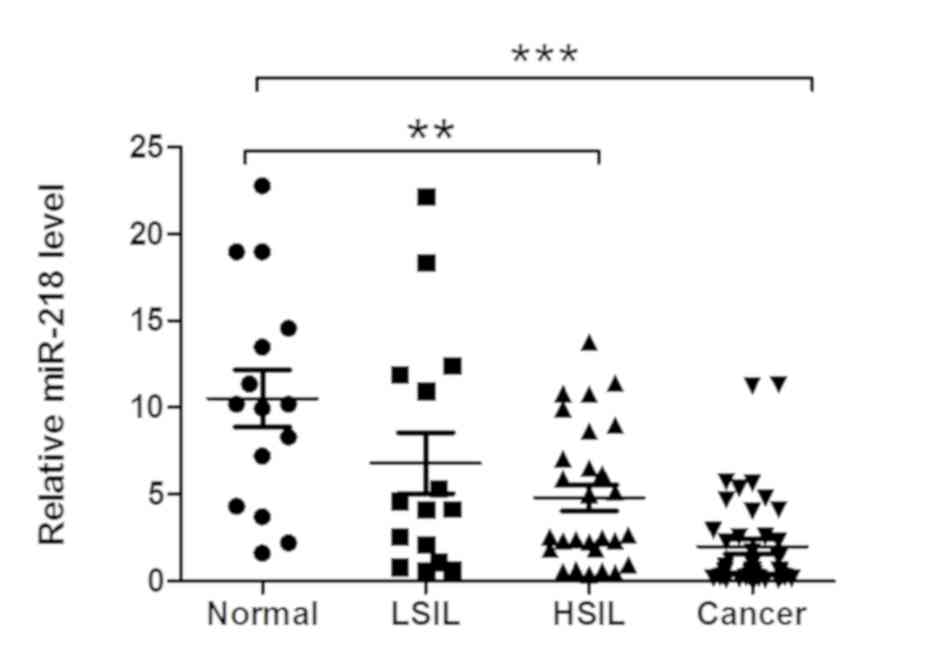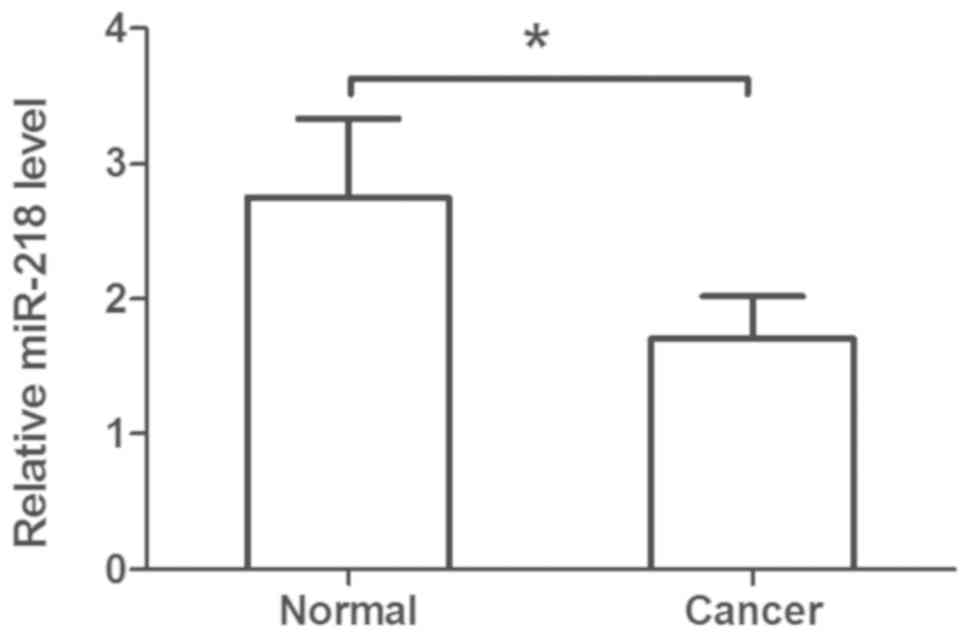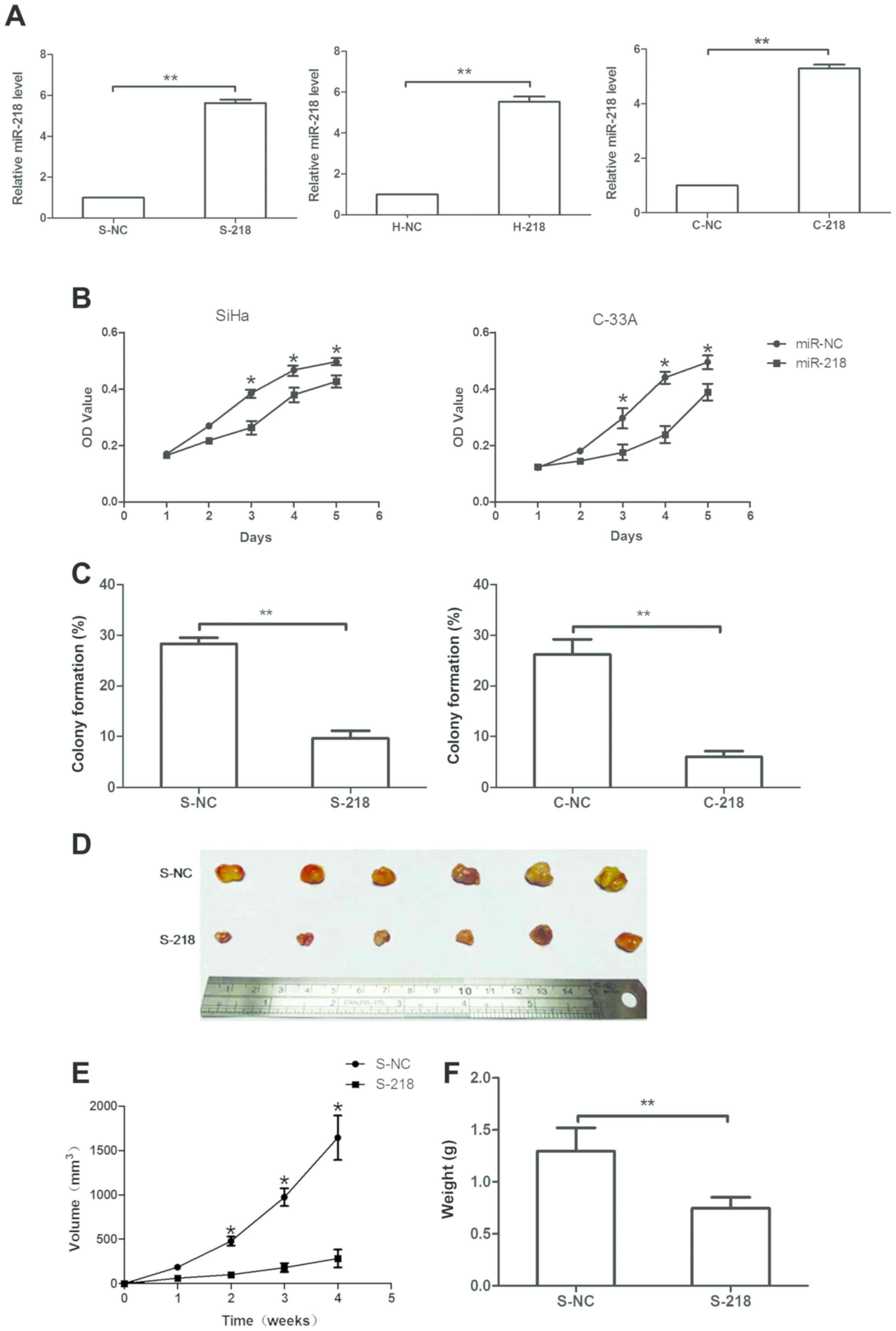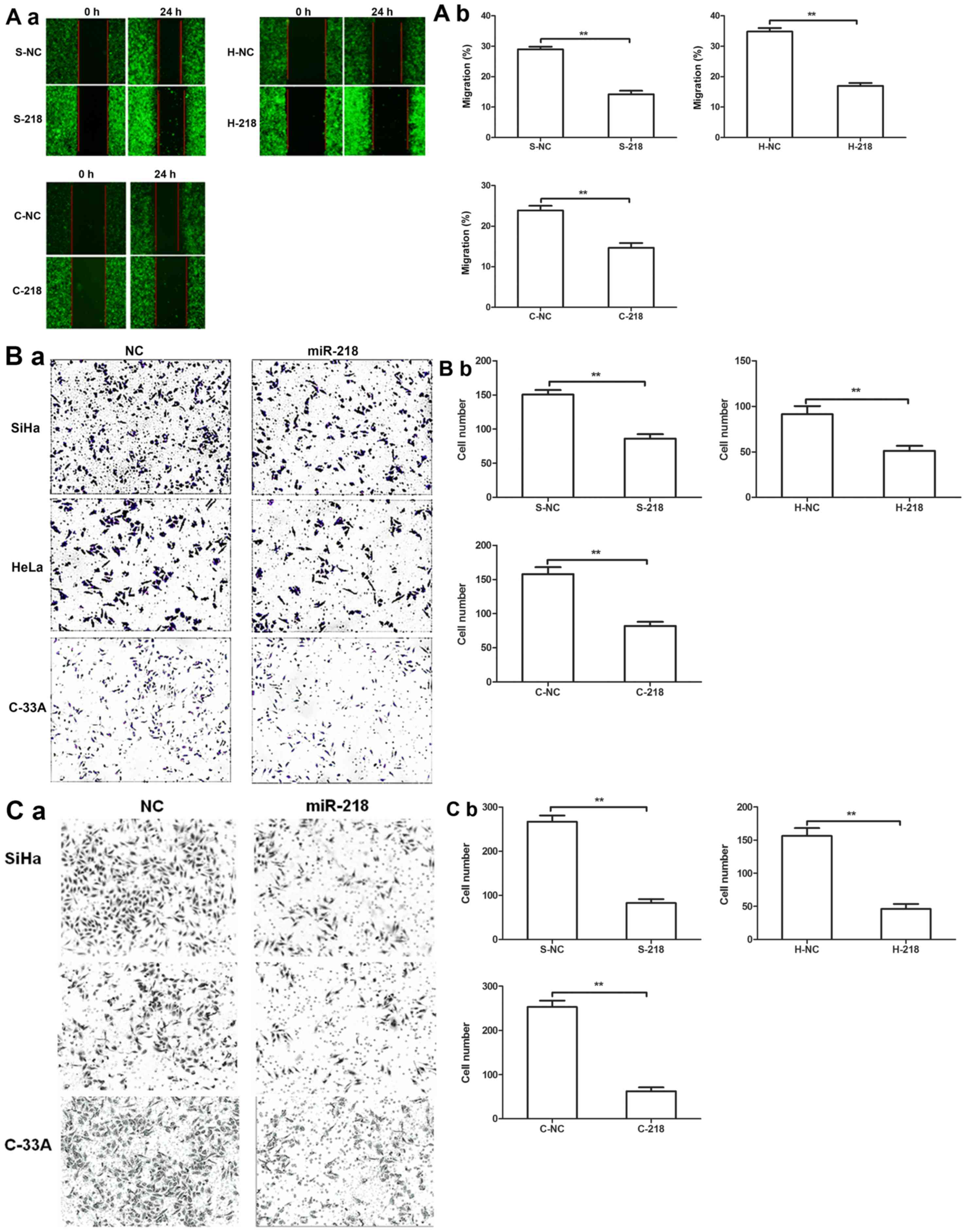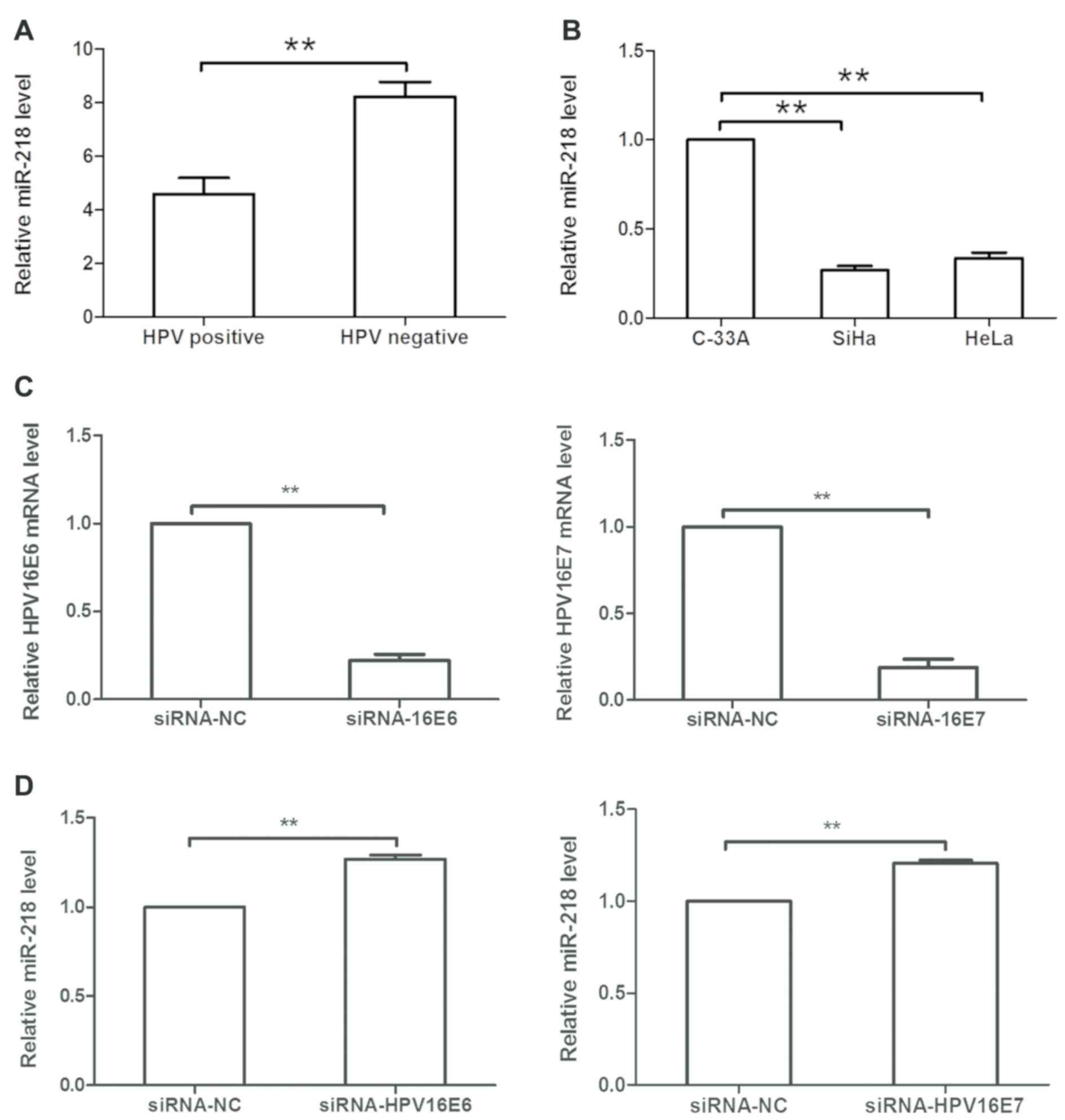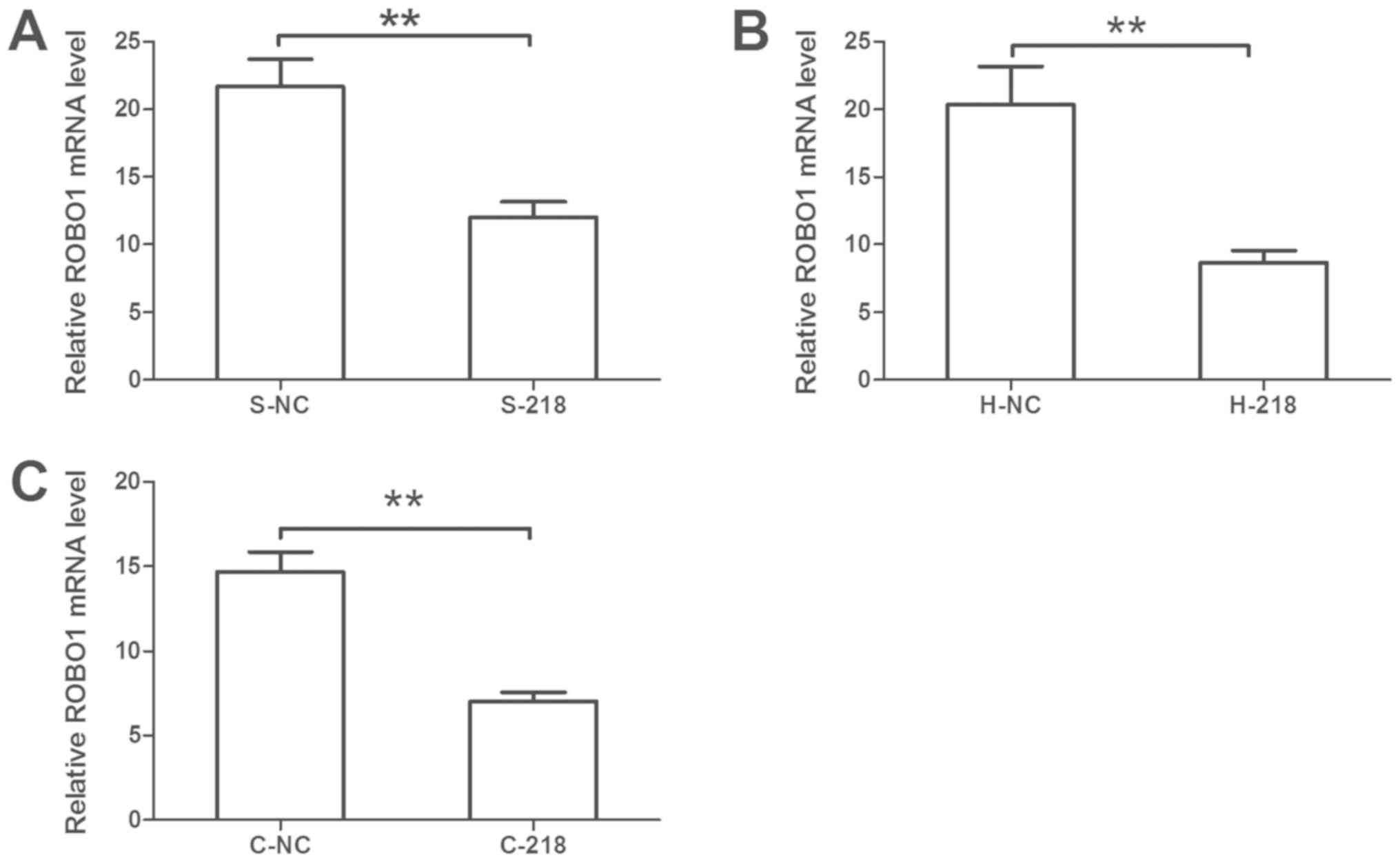|
1
|
Marth C, Landoni F, Mahner S, McCormack M,
Gonzalez-Martin A and Colombo N; ESMO Guidelines Committee, :
Cervical cancer: ESMO clinical practice guidelines for diagnosis,
treatment and follow-up. Ann Oncol. 29 (Supplement_4):v2622018.
View Article : Google Scholar
|
|
2
|
Tran NP, Hung CF, Roden R and Wu TC:
Control of HPV infection and related cancer through vaccination.
Recent Results Cancer Res. 193:149–171. 2014. View Article : Google Scholar : PubMed/NCBI
|
|
3
|
Gadducci A, Barsotti C, Cosio S, Domenici
L and Riccardo Genazzani A: Smoking habit, immune suppression, oral
contraceptive use, and hormone replacement therapy use and cervical
carcinogenesis: A review of the literature. Gynecol Endocrinol.
27:597–604. 2011. View Article : Google Scholar : PubMed/NCBI
|
|
4
|
Bosch FX and de Sanjose S: The
epidemiology of human papillomavirus infection and cervical cancer.
Dis Markers. 23:213–227. 2007. View Article : Google Scholar : PubMed/NCBI
|
|
5
|
Jones WB, Mercer GO, Lewis JL Jr, Rubin SC
and Hoskins WJ: Early invasive carcinoma of the cervix. Gynecol
Oncol. 51:26–32. 1993. View Article : Google Scholar : PubMed/NCBI
|
|
6
|
Waggoner SE: Cervical cancer. Lancet.
361:2217–2225. 2003. View Article : Google Scholar : PubMed/NCBI
|
|
7
|
Lin Y, Zhou J, Dai L, Cheng Y and Wang J:
Vaginectomy and vaginoplasty for isolated vaginal recurrence 8
years after cervical cancer radical hysterectomy: A case report and
literature review. J ObstetGynaecol Res. 43:1493–1497. 2017.
|
|
8
|
Ramirez PT and Salvo G: Gynecological
Tumors. Cervical cancer (Internet) MSD Manual; New Jersey, USA:
2018
|
|
9
|
Shukla GC, Singh J and Barik S: MicroRNAs:
Processing, maturation, target recognition and regulatory
functions. Mol Cell Pharmacol. 3:83–92. 2011.PubMed/NCBI
|
|
10
|
Bartel DP: MicroRNAs: Target recognition
and regulatory functions. Cell. 136:215–233. 2009. View Article : Google Scholar : PubMed/NCBI
|
|
11
|
Chiantore MV, Mangino G, Iuliano M,
Zangrillo MS, De Lillis I, Vaccari G, Accardi R, Tommasino M,
Fiorucci G and Romeo G: IFN-β antiproliferative effect and miRNA
regulation in human papilloma virus E6- and E7-transformed
keratinocytes. Cytokine. 89:235–238. 2017. View Article : Google Scholar : PubMed/NCBI
|
|
12
|
Jimenez-Wences H, Martinez-Carrillo DN,
Peralta-Zaragoza O, Campos-Viguri GE, Hernández-Sotelo D,
Jiménez-López MA, Muñoz-Camacho JG, Garzón-Barrientos VH,
Illades-Aguiar B and Fernández-Tilapa G: Methylation and expression
of miRNAs in precancerous lesions and cervical cancer with HPV16
infection. Oncol Rep. 35:2297–2305. 2016. View Article : Google Scholar : PubMed/NCBI
|
|
13
|
Chhabra R: let-7i-5p, miR-181a-2-3p and
EGF/PI3K/SOX2 axis coordinate to maintain cancer stem cell
population in cervical cancer. Sci Rep. 8:78402018. View Article : Google Scholar : PubMed/NCBI
|
|
14
|
Gao C, Zhou C, Zhuang J, Liu L, Liu C, Li
H, Liu G, Wei J and Sun C: MicroRNA expression in cervical cancer:
Novel diagnostic and prognostic biomarkers. J Cell Biochem.
119:7080–7090. 2018. View Article : Google Scholar : PubMed/NCBI
|
|
15
|
Kawai S, Fujii T, Kukimoto I, Yamada H,
Yamamoto N, Kuroda M, Otani S, Ichikawa R, Nishio E, Torii Y and
Iwata A: Identification of miRNAs in cervical mucus as a novel
diagnostic marker for cervical neoplasia. Sci Rep. 8:70702018.
View Article : Google Scholar : PubMed/NCBI
|
|
16
|
Chen Z, Han Y, Song C, Wei H, Chen Y,
Huang K, Li S, Ma D, Wang S, Wang J and Lu Q: Systematic review and
meta-analysis of the prognostic significance of microRNAs in
cervical cancer. Oncotarget. 9:17141–17148. 2017.PubMed/NCBI
|
|
17
|
Peta E, Sinigaglia A, Masi G, Di Camillo
B, Grassi A, Trevisan M, Messa L, Loregian A, Manfrin E, Brunelli
M, et al: HPV16 E6 and E7 upregulate the histone lysine demethylase
KDM2B through the c-MYC/miR-146a-5p axys. Oncogene. 37:1654–1668.
2018. View Article : Google Scholar : PubMed/NCBI
|
|
18
|
Honegger A, Schilling D, Sultmann H,
Hoppe-Seyler K and Hoppe-Seyler F: Identification of
E6/E7-dependent MicroRNAs in HPV-positive cancer cells. Methods Mol
Biol. 1699:119–134. 2018. View Article : Google Scholar : PubMed/NCBI
|
|
19
|
Srivastava SK, Ahmad A, Zubair H, Miree O,
Singh S, Rocconi RP, Scalici J and Singh AP: MicroRNAs in
gynecological cancers: Small molecules with big implications.
Cancer Lett. 407:123–138. 2017. View Article : Google Scholar : PubMed/NCBI
|
|
20
|
Zeng K, Zheng W, Mo X, Liu F, Li M, Liu Z,
Zhang W and Hu X: Dysregulated microRNAs involved in the
progression of cervical neoplasm. Arch Gynecol Obstet. 292:905–913.
2015. View Article : Google Scholar : PubMed/NCBI
|
|
21
|
Alajez NM, Lenarduzzi M, Ito E, Hui AB,
Shi W, Bruce J, Yue S, Huang SH, Xu W, Waldron J, et al: MiR-218
suppresses nasopharyngeal cancer progression through downregulation
of survivin and the SLIT2-ROBO1 pathway. Cancer Res. 71:2381–2391.
2011. View Article : Google Scholar : PubMed/NCBI
|
|
22
|
Zhang X, Dong J, He Y, Zhao M, Liu Z, Wang
N, Jiang M, Zhang Z, Liu G, Liu H, et al: miR-218 inhibited tumor
angiogenesis by targeting ROBO1 in gastric cancer. Gene. 615:42–49.
2017. View Article : Google Scholar : PubMed/NCBI
|
|
23
|
Gu JJ, Gao GZ and Zhang SM: MiR-218
inhibits the tumorgenesis and proliferation of glioma cells by
targetingRobo1. Cancer Biomark. 16:309–317. 2016. View Article : Google Scholar : PubMed/NCBI
|
|
24
|
Yang M, Liu R, Li X, Liao J, Pu Y, Pan E,
Wang Y and Yin L: Epigenetic repression of miR-218 promotes
esophageal carcinogenesis by targetingROBO1. Int J Mol Sci.
16:27781–27795. 2015. View Article : Google Scholar : PubMed/NCBI
|
|
25
|
Tsikouras P, Zervoudis S, Manav B, Tomara
E, Iatrakis G, Romanidis C, Bothou A and Galazios G: Cervical
cancer: Screening, diagnosis and staging. J BUON. 21:320–325.
2016.PubMed/NCBI
|
|
26
|
Feldman AT and Wolfe D: Tissue processing
and hematoxylin and eosin staining. Methods Mol Biol. 1180:31–43.
2014. View Article : Google Scholar : PubMed/NCBI
|
|
27
|
Livak KJ and Schmittgen TD: Analysis of
relative gene expression data using real-time quantitative PCR and
the 2(-Delta Delta C(T)) method. Methods. 25:402–408. 2001.
View Article : Google Scholar : PubMed/NCBI
|
|
28
|
Aiso T, Sekine N, Takagi Y and Ohnishi H:
Study on the sample preservation temperature and period in
circulating MicroRNAQuantification using spike-in control. Rinsho
Byori. 63:688–693. 2015.(In Japanese). PubMed/NCBI
|
|
29
|
Barreto CL, Martins DB, de Lima Filho JL
and Magalhães V: Detection of human papillomavirus in biopsies of
patients with cervical cancer, and its association with prognosis.
Arch Gynecol Obstet. 288:643–648. 2013. View Article : Google Scholar : PubMed/NCBI
|
|
30
|
Di Martino MT, Campani V, Misso G, Gallo
Cantafio ME, Gullà A, Foresta U, Guzzi PH, Castellano M, Grimaldi
A, Gigantino V, et al: In vivo activity of miR-34a mimics delivered
by stable nucleic acid lipid particles (SNALPs) against multiple
myeloma. PLoS One. 9:e900052014. View Article : Google Scholar : PubMed/NCBI
|
|
31
|
Li Y, Liu J, Yuan C, Cui B, Zou X and Qiao
Y: High-risk human papillomavirus reduces the expression of
microRNA-218 in women with cervical intraepithelial neoplasia. J
Int Med Res. 38:1730–1736. 2010. View Article : Google Scholar : PubMed/NCBI
|
|
32
|
Jiang Z, Song Q, Zeng R, Li J, Li J, Lin
X, Chen X, Zhang J and Zheng Y: MicroRNA-218 inhibits EMT,
migration and invasion by targeting SFMBT1 and DCUN1D1 in cervical
cancer. Oncotarget. 7:45622–45636. 2016.PubMed/NCBI
|
|
33
|
Huang YH, Liang KH, Chien RN, Hu TH, Lin
KH, Hsu CW, Lin CL, Pan TL, Ke PY and Yeh CT: A circulating
MicroRNA signature capable of assessing the risk of
hepatocellularcarcinoma in cirrhotic patients. Sci Rep. 7:5232017.
View Article : Google Scholar : PubMed/NCBI
|
|
34
|
Zhang K, Wang YW, Wang YY, Song Y, Zhu J,
Si PC and Ma R: Identification of microRNA biomarkers in the blood
of breast cancer patients based on microRNA profiling. Gene.
619:10–20. 2017. View Article : Google Scholar : PubMed/NCBI
|
|
35
|
Decmann A, Perge P, Nagy Z, Butz H, Patócs
A and Igaz P: Circulating microRNAs in the diagnostics of endocrine
neoplasms. Orv Hetil. 158:483–490. 2017.(In Hungarian). View Article : Google Scholar : PubMed/NCBI
|
|
36
|
Lawrie CH, Gal S, Dunlop HM, Pushkaran B,
Liggins AP, Pulford K, Banham AH, Pezzella F, Boultwood J,
Wainscoat JS, et al: Detection of elevated levels of
tumour-associated microRNAs in serum of patientswith diffuse large
B-cell lymphoma. Br J Haematol. 141:672–675. 2008. View Article : Google Scholar : PubMed/NCBI
|
|
37
|
Sun Y, Wang M, Lin G, Sun S, Li X, Qi J
and Li J: Serum microRNA-155 as a potential biomarker to track
disease in breast cancer. PLoS One. 7:e470032012. View Article : Google Scholar : PubMed/NCBI
|
|
38
|
Kessler TA: Cervical cancer: Prevention
and early detection. SeminOncol Nurs. 33:172–183. 2017.
|
|
39
|
Lu Z, Chen H, Zheng XM and Chen ML:
Expression and clinical significance of high risk human
papillomavirus and invasive gene in cervical carcinoma. Asian Pac J
Trop Med. 10:195–200. 2017. View Article : Google Scholar : PubMed/NCBI
|
|
40
|
Ben W, Yang Y, Yuan J, Sun J, Huang M,
Zhang D and Zheng J: Human papillomavirus 16 E6 modulates the
expression of host microRNAs in cervical cancer. Taiwan J Obstet
Gynecol. 54:364–370. 2015. View Article : Google Scholar : PubMed/NCBI
|
|
41
|
Nambaru L, Meenakumari B, Swaminathan R
and Rajkumar T: Prognostic significance of HPV physical status and
integration sites in cervical cancer. Asian Pac J Cancer Prev.
10:355–360. 2009.PubMed/NCBI
|
|
42
|
Song L, Liu S, Zeng S, Zhang L and Li X:
miR-375 modulates radiosensitivity of HR-HPV-positive cervical
cancer cells by targeting UBE3A through the p53 pathway. Med Sci
Monit. 21:2210–2217. 2015. View Article : Google Scholar : PubMed/NCBI
|
|
43
|
Liu X: Up-regulation of miR-20a by HPV16
E6 exerts growth-promoting effects by targeting PDCD6 in cervical
carcinoma cells. Biomed Pharmacother. 102:996–1002. 2018.
View Article : Google Scholar : PubMed/NCBI
|
|
44
|
Martinez I, Gardiner AS, Board KF, Monzon
FA, Edwards RP and Khan SA: Human papillomavirus type 16 reduces
the expression of microRNA-218 in cervical carcinoma cells.
Oncogene. 27:2575–2582. 2008. View Article : Google Scholar : PubMed/NCBI
|
|
45
|
Sun X, Song S, Liang X, Xie Y, Zhao C,
Zhang Y, Shu H and Gong G: ROBO1 polymorphisms, callosal
connectivity, and reading skills. Hum Brain Mapp. 38:2616–2626.
2017. View Article : Google Scholar : PubMed/NCBI
|
|
46
|
Wang J, Zhou Y, Fei X, Chen X, Chen R, Zhu
Z and Chen Y: Integrative bioinformatics analysis identifies ROBO1
as a potential therapeutic target modified by miR-218 in
hepatocellular carcinoma. Oncotarget. 8:61327–61337.
2017.PubMed/NCBI
|
|
47
|
Gu JJ, Gao GZ and Zhang SM: miR-218
inhibits the migration and invasion of glioma U87 cells through the
Slit2-Robo1 pathway. Oncol Lett. 9:1561–1566. 2015. View Article : Google Scholar : PubMed/NCBI
|















